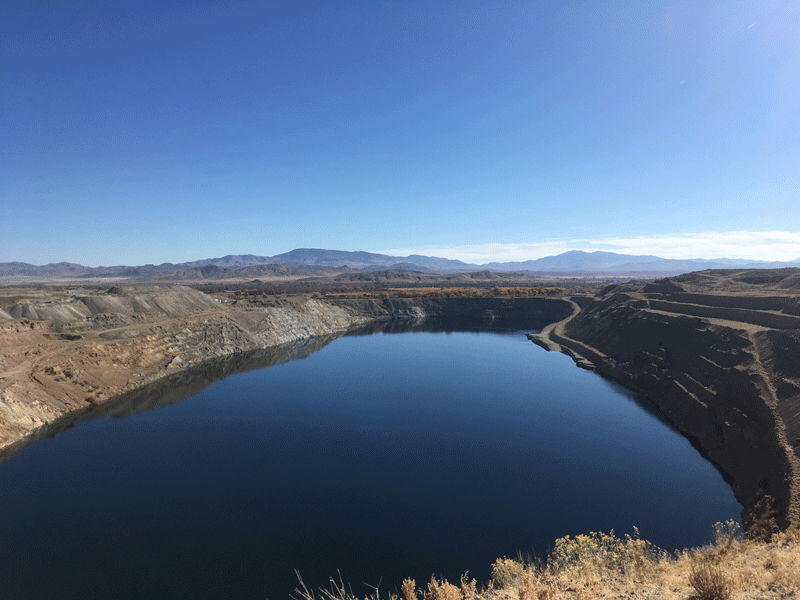Textures uncover mineral deposits
Textures preserved in rock may give an early indication of where porphyry-type copper deposits are located, Researchers from the University of Exeter, UK, reveal.

The study was carried out in the Yerington district of Nevada, USA, where tilting of the upper crust offers a globally unique cross-section through four porphyry-type deposits and their host rocks.
‘We identified a suite of magmatic and magmatic-hydrothermal textures in the rocks that offer snapshots into the timing and location of the physical processes that result in fluid exsolution and porphyry-style mineralisation,’ says Lawrence Carter, a PhD student and Research Associate at the Camborne School of Mines, based at the University of Exeter.
The investigation involved meticulous, up-close study of outcropping rocks and of several kilometres of drill core through specific parts of the porphyry-deposit-forming magmatic system. The team used microscale petrographic and geochemical analyses of quartz unidirectional solidification textures.
Porphyry-type deposits provide most of the world’s copper and molybdenum, as well as large amounts of gold and other metals. Carter explains that they are characteristically very large, low-grade deposits, thus typically lending themselves to large-scale open pit mining operations. Companies employ a wide range of invasive and expensive exploration techniques to find them.
‘Textures we found within granitic cupolas that underlie porphyry deposits in the district include pegmatitic pods and massive silica bodies. Textures we found within aplite dykes, which are genetically associated with ore formation, include mineralised unidirectional solidification textures (USTs), pegmatitic segregations, miarolitic cavities and early A-type quartz veins.’
He adds, ‘The textural framework we describe will aid geologists to assess the likely 3D spatial and temporal architecture of porphyry deposit-forming magmatic systems worldwide. The textures are also applicable to other types of shallow crustal magmatic systems where similar physical processes likely occur, such as those related to tin-tungsten mineralisation.’
Previous understanding of such textures worldwide was disjointed because they are often small, poorly exposed, or are simply not recognised when encountered.
Carter says, ‘By allowing geologists to assess the likely 3D architecture of the porphyry systems they are investigating, our textural framework will assist in targeting in the initial stages of exploration at the district/prospect scale, and also reduce the use of more expensive, invasive and/or environmentally impactive techniques. When combined with other geological data and observations, they can also serve as powerful tools for unravelling the intrusive history of an igneous complex.’
The team has found the textures while investigating textural evidence for the exsolution depth and migration pathways of mineralising fluids in porphyry deposit-forming magmatic systems. This research is related to an ongoing, high-precision, uranium-lead geochronological study, which aims to reconstruct timescales over which the porphyry-deposit-sourcing magma chambers grew.
Moving forward Carter is ‘also seeking research support from exploration companies and funding bodies to further detail the textural framework with examples from other porphyry-deposit-forming magmatic systems worldwide’.

